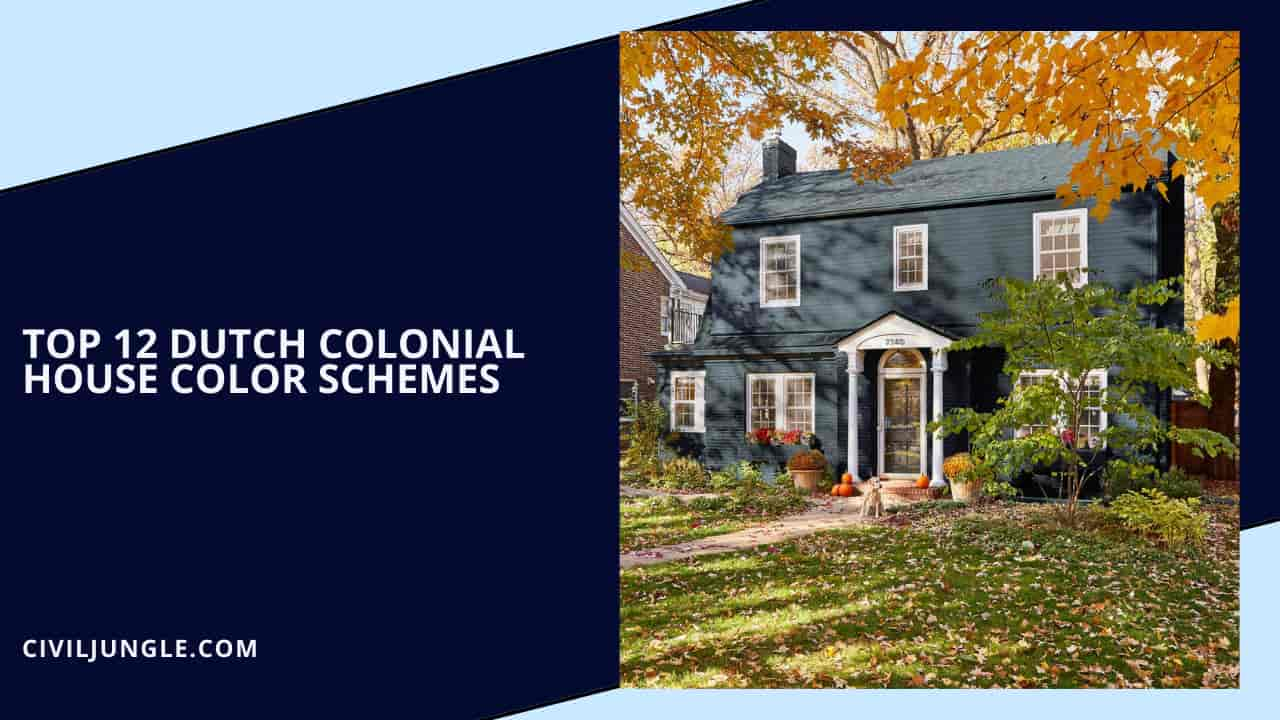Dutch Colonial houses have been a staple in American architecture for centuries, with their charming gambrel roofs and distinctive gambrel roofs.
However, while the architectural style remains timeless, the color schemes used for these homes have evolved with time.
As Dutch Colonial homes continue to gain popularity, homeowners and designers are looking for innovative ways to showcase their unique character through bold color choices.
In this article, we will explore the Top 40 Dutch Colonial house color schemes that will elevate the appearance of these classic homes and provide inspiration for those seeking to add a touch of modernity to a traditional style.
Dutch Colonial House Color Scheme
Important Point
Also, Read: Top 16 Navy Blue House Color Schemes
Also, Read: Top 18 New House Color Schemes
The Dutch Colonial house is a popular architectural style that emerged in the New Netherlands region of colonial America. It is characterized by its gambrel roof, which features a steep lower slope and a flatter upper slope.
The exterior of these houses typically feature simple and symmetrical designs with a traditional and rustic feel.
When it comes to selecting the color scheme for a Dutch Colonial house, there are a few key factors to keep in mind. These houses were built during the 17th and 18th centuries, when paint was costly and limited in color options.
Therefore, most of these houses were originally painted with earthy or neutral colors, such as shades of white, grey, beige, and brown.
However, as time went on and paint became more affordable and readily available, Dutch Colonial houses started to incorporate brighter and bolder colors into their exterior.
Today, there are a variety of color options available for painting a Dutch Colonial house, but there are a few classic color schemes that are commonly used and retain the traditional charm of the style.
The most common and classic color scheme for a Dutch Colonial house is a combination of white and black. This timeless pairing adds a touch of sophistication and elegance to the exterior.
A white upper section of the house, which includes the upper slope of the roof and the walls, gives a pure and clean appearance.
A black lower section, including the lower slope of the roof, window frames, and shutters, adds contrast and depth to the design.
Another popular color scheme for Dutch Colonial houses is a combination of white and grey. This gives a softer and more natural look compared to the black and white scheme.
The white and grey combination gives a sense of balance and harmony, making it a perfect choice for those who want to maintain the traditional charm of a Dutch Colonial house while adding a modern touch.
For those looking for more vibrant and eye-catching color schemes, shades of blue and green can be used for a Dutch Colonial house. These colors add a touch of warmth and playfulness to the exterior.
A lighter shade of blue or green on the upper section of the house can create a sense of openness and spaciousness, while a darker shade on the lower section adds a cozy and inviting feel.
These colors also work well when complemented with white or grey accents.
It is important to note that the color scheme for a Dutch Colonial house should complement the surrounding landscape and other architectural elements.
One should also consider the size and proportions of the house when selecting the color scheme. Using too many bold colors on a small Dutch Colonial house can make it look busy and overwhelming.
Conclusion
In conclusion, Dutch colonial houses offer a unique and charming architectural style that can be enhanced even further with the right color scheme.
From classic whites and deep greens to bold yellows and reds, there is a wide range of colors to choose from when painting your Dutch colonial home.
With the help of this list of top 40 color schemes, homeowners can easily find the perfect combination to make their house stand out in the neighborhood.
Whether you prefer a traditional, historic look or a more modern and vibrant feel, these color schemes are sure to elevate the curb appeal of your Dutch colonial home.
So don’t be afraid to experiment and have fun with your color choices, and watch as your home transforms into a stunning and welcoming space.
Like this post? Share it with your friends!
Suggested Read –














Leave a Reply